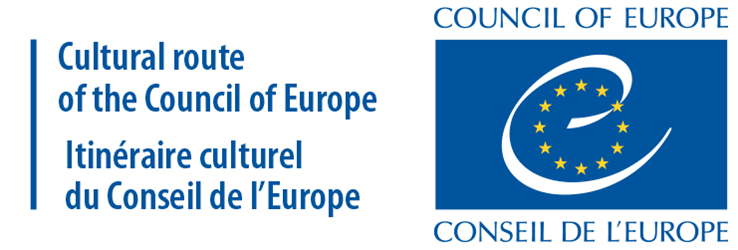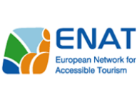Is a certified tourist guide for Greece, a FEG & WFTGA tourist guide trainer and elected as the FEG ExCo president
FEG on the European Cultural Routes.... .. ... ... .. .. ...
The European Federation of Tourist Guide Associations (FEG) is delighted to announce anew partnership with the “Cultural Routes of the Council of Europe”.
Following an exchange of views between the Governing Board Enlarged Partial Agreement (EPA) on Cultural Routes and FEG on a virtual meeting in April 2021, the Governing Board of the EPA has favourably granted FEG such Participative Status.
Participative Status means that the Cultural Routes Governing Board will be inviting FEG to its meetings when agenda items would be of interest to FEG so it can participate in EPA’s work. It will also be inviting FEG to its events, such as the Annual Advisory Forum and its Training Academy.

What are the Cultural Routes of the Council of Europe?
Here are some facts:
The Santiago de Compostela Pilgrim Routes became the first Cultural Route of the Council of Europe in 1987.
Today there are more than 30 Council of Europe certified Cultural Routes.
Over 60 countriesin Europe are criss-crossed by Cultural Routes.
Cultural Routes have more than 2500 network members and more than 1500 towns are incorporated in Cultural Routes.
90% of the Cultural Routes are in rural areas and in those 12% of the local employment is linked to tourism.
The member states of the EPA each appoint one representative from their ministry of culture and/or tourism to the EPA Governing Board. The Governing Board is responsible for the certification of the candidate networks, the re-certification of Cultural Routes under regular or exceptional evaluation, and the overall orientation of the programme, as well as for adopting of its draft annual programme of activities and monitoring implementation of the activities. The Governing Board meets each year in April.

Image: Mosaic of some Cultural Routes, Source: Cultural Routes of the Council of Europe
The criteria for selecting and certifying new Cultural Routes, include that they must:
- Involve a theme that is representative of European values and common to at least three countries in Europe;
- Be the subject of transnational, multidisciplinary scientifi¬c research;
- Enhance European memory, history and heritage and contribute to interpretation of Europe’s present-day diversity;
- Support cultural and educational exchanges for young people;
- Develop exemplary and innovative projects in the field of cultural tourism and sustainable cultural development;
- Develop tourist products and services aimed at di¬fferent groups.

Image: Iter Vitis Route, Source: Cultural Routes of the Council of Europe
The Cultural Routes of the Council of Europe programme is a tool to preserve and valorise cultural heritage across Europe. The uniqueness of the Cultural Routes programme includes the following principles:
- a focus on less well-known destinations, which allows a more balanced local and regional development, as 90% of the Cultural Routes, which wind through the 47 member states of the Council of Europe, are in rural areas.
- it includes multiple sites, which provides more opportunities for developing European cultural tourism clusters and engaging a large number of local stakeholders.
- it is truly transnational in nature, each route having members in at least three countries, which highlights shared European values and underlines common histories of identity and heritage.
- it emphasises a bottom-up approach to cultural management, as the Cultural Routes are initiated and managed by networks composed of diverse public and private stakeholders, rather than governments.

Image: Cyril and Methodius Route, Source: Cultural Routes of the Council of Europe
The Cultural Routes fosters awareness-raising about heritage, education, networking, quality and sustainable cross-border tourism and other related activities. Among its other actions, it organises an Annual Advisory Forum on Cultural Routes on a key theme or issue, training for member states, national and regional stakeholders and Cultural Routes operators, maximises communication and visibility on the Cultural Routes programme, its activities and achievements.
Qualified Tourist Guides in Europe may already be part of the Cultural Routes employment network in their own areas of qualification by providing guided tours or they can easily become part of it, once they explore and promote these amazing, non-touristic Routes to our visitors and tour organisers.
You can click on the full Cultural Routes listing per European country and see which are the themed Routes in your own area here:
https://www.coe.int/en/web/cultural-routes/epa-member-states










